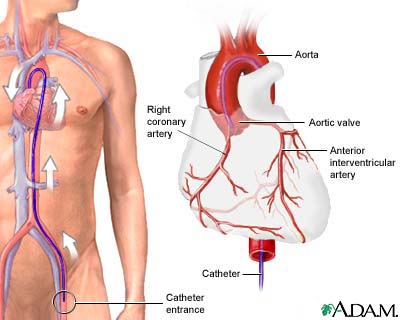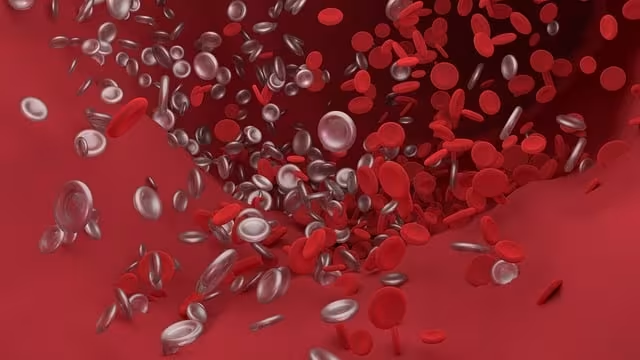Heart disease remains one of the leading causes of mortality worldwide, with coronary artery disease (CAD) being particularly prevalent.
Fortunately, medical advancements have provided effective diagnostic and treatment procedures that can detect and address blockages in coronary arteries.
Two of the most important cardiac procedures are coronary angiography and coronary angioplasty.
While these procedures are often mentioned together and may sound similar, they serve distinct purposes in cardiac care.
This article provides a comprehensive overview of coronary angiography and angioplasty, explaining their differences, when each is recommended, what to expect during and after these procedures, and addressing common questions.
Related article: Which Cardiologist in Singapore Should You Consider? (Sort by Reviews)
What is Coronary Angiography?

Coronary angiography (also called an angiogram) is a diagnostic procedure that uses X-ray imaging and a special contrast dye to visualize blood flow through the arteries in your heart. The primary purpose is to detect narrowing or blockages in the coronary arteries.
How is an Angiogram Performed?
The procedure involves several key steps, beginning with local anesthesia administered to numb the area where the catheter will be inserted, typically the wrist or groin.
A small incision is made at the insertion site, and a thin, flexible tube called a catheter is inserted into an artery and guided to the heart under X-ray guidance.
Once positioned near the coronary arteries, a special contrast dye is injected through the catheter, making the blood vessels visible on X-ray and creating real-time images called angiograms.
These images allow cardiologists to identify any narrowing, blockages, or abnormalities in the coronary arteries.
An angiogram typically takes between 30 minutes to 2 hours to complete, depending on complexity, and is usually performed while the patient is awake but sedated.
You might like: Health Screening in Singapore
When is an Angiogram Recommended?
A cardiologist may recommend an angiogram to investigate chest pain or other symptoms that might indicate coronary artery disease, after abnormal results from non-invasive tests like stress tests or ECGs, to assess the severity and location of known coronary artery disease, or to evaluate heart function and coronary blood flow after a heart attack.
The procedure may also be recommended to check heart condition before major surgeries or to determine if an intervention like angioplasty is needed.
What is Coronary Angioplasty?

Coronary angioplasty, also known as Percutaneous Coronary Intervention (PCI), is a treatment procedure designed to widen blocked or narrowed coronary arteries, restoring normal blood flow to the heart.
Unlike angiography, which is purely diagnostic, angioplasty is an interventional procedure that treats the blockage.
Read more: Comprehensive Guide to Coronary Angioplasty in Singapore
How is Angioplasty Performed?
The angioplasty procedure begins similarly to an angiogram with local anesthesia and the insertion of a catheter into an artery through the wrist or groin.
The catheter is guided to the blocked or narrowed coronary artery, and a guidewire is threaded through the catheter to the blockage site.
A small balloon attached to the catheter is positioned at the blockage or narrowing and then inflated, which compresses the plaque against the artery wall and widens the artery.
If a stent is being placed, it expands as the balloon inflates and remains in place after the balloon is deflated, with the balloon and catheter then removed.
Dye is injected again to confirm improved blood flow, and the procedure typically takes between 30 minutes to 2 hours, depending on the complexity of the case and number of blockages being treated.
You might be interested: Best JB Health Screening Clinics for Singaporeans
When is Angioplasty Recommended?
Angioplasty may be recommended in several situations, including for patients with significant coronary artery blockages causing symptoms, during or shortly after a heart attack to quickly restore blood flow, and for patients with unstable angina or severe chest pain.
The procedure may also be considered when medication alone isn’t effective in treating coronary artery disease or for patients with severely narrowed arteries detected during an angiogram.
Heart Stents Used During Angioplasty
During angioplasty, cardiologists often place a stent – a small, expandable mesh tube – to help keep the artery open after the procedure. There are three main types of stents:
1. Drug-Eluting Stents (DESs)
- Metal stents coated with medication that prevents scar tissue formation
- Reduces the risk of restenosis (re-narrowing of the artery)
- Requires prolonged use of antiplatelet medications to prevent blood clots
- Most commonly used type in current practice
2. Bioresorbable Vascular Scaffolds (BVSs)
- Made of materials that the body can gradually absorb over time
- Also coated with drugs to prevent tissue formation
- Provides temporary support until the vessel can remain open on its own
- Lowers long-term risk of both restenosis and stent thrombosis
- Requires antiplatelet therapy until fully absorbed
3. Bare Metal Stents

- Uncoated stainless steel stents
- Higher risk of restenosis compared to other types
- Requires shorter duration of antiplatelet therapy
- Most suitable for patients with high bleeding risk or those unable to take long-term antiplatelet medications
You might like: Diabetes Treatment in Singapore: Types, Risks
Key Differences Between Angiogram and Angioplasty
Understanding the differences between these procedures is important:
| Aspect | Angiogram | Angioplasty |
|---|---|---|
| Purpose | Diagnostic – identifies blockages | Therapeutic – treats blockages |
| Function | Visualizes coronary arteries | Opens narrowed or blocked arteries |
| Duration | 30-50 minutes on average | 30 minutes to 2 hours |
| Equipment | Catheter and contrast dye | Catheter, guidewire, balloon, and possibly stent |
| Outcome | Provides images of arteries | Widens narrowed arteries and improves blood flow |
| Recovery | Same-day discharge typically | Usually requires overnight hospital stay |
| Follow-up | May lead to recommendation for treatment | Requires medication and lifestyle changes |
Preparation for These Procedures
Before an Angiogram or Angioplasty
To prepare for either procedure, you should inform your cardiologist about any allergies, especially to contrast dye or iodine, provide a complete list of current medications, and disclose any underlying medical conditions.
You should also mention any previous surgical procedures or planned surgeries, inform your doctor if you are pregnant, nursing, or trying to conceive, fast for at least 6 hours before the procedure, and make arrangements for transportation home afterward.
Your doctor may adjust your medications before the procedure, particularly blood thinners, diabetes medications, or NSAIDs.
Related article: Diabetes Myths Debunked: Separating Fact from Fiction
What to Expect During the Procedures
During an Angiogram
During an angiogram, you will be awake but sedated and given local anesthesia, and you might feel a warm sensation when the contrast dye is injected.
The procedure is typically not painful, though you may feel pressure at the insertion site, and the doctor may ask you to hold your breath briefly during imaging while you remain connected to monitors tracking vital signs.
During an Angioplasty
During an angioplasty, you will similarly be awake but sedated and may feel brief chest discomfort similar to angina when the balloon inflates.
The procedure takes longer than an angiogram, and you will feel pressure at the insertion site while the healthcare team continuously monitors your heart rate, blood pressure, and oxygen levels.
You might like: Type 1 Diabetes Treatment in Singapore: Causes, Risks
Recovery and Aftercare
After an Angiogram
You’ll need to lie flat for several hours if the access was through the groin while nurses monitor the insertion site for bleeding.
You can typically go home the same day, should avoid strenuous activities for 24-48 hours, and may experience minor bruising and soreness at the insertion site, which is normal.
After an Angioplasty
You’ll likely stay in the hospital overnight for monitoring while the insertion site is checked regularly for bleeding or complications.
You’ll need to take prescribed medications, including blood thinners, should avoid heavy lifting and strenuous activities for about a week, will need follow-up appointments with your cardiologist, and typically can’t drive for 24-48 hours after the procedure.
Potential Risks and Complications
While both procedures are generally safe, they do carry some risks:
Angiogram Risks
- Bruising or bleeding at the insertion site
- Allergic reaction to the contrast dye
- Kidney damage from the contrast dye
- Infection at the insertion site
- Blood vessel damage
- Rarely, stroke, heart attack, or arrhythmias
Angioplasty Risks
All the risks associated with an angiogram, plus:
- Re-narrowing of the artery (restenosis)
- Blood clots forming in the stent (stent thrombosis)
- Damage to the artery during the procedure
- Emergency bypass surgery if complications occur
- Bleeding complications if on blood thinners
- Heart attack, stroke, or arrhythmias (rare)
The likelihood of complications depends on factors such as:
- Age
- Overall health
- Underlying medical conditions (especially diabetes or kidney disease)
- Severity of coronary artery disease
- Whether the procedure is elective or emergency
Life After Angioplasty
An angioplasty is not a cure for coronary artery disease but a treatment for its effects, so maintaining heart health after the procedure requires taking all prescribed medications especially antiplatelet drugs, following a heart-healthy diet low in saturated fats and sodium, exercising regularly as recommended by your doctor, and quitting smoking.
You should also control other risk factors like diabetes, high blood pressure, and high cholesterol, attend all follow-up appointments, and report any new or recurring symptoms promptly.
Most patients can resume normal activities within a week, but recovery times vary based on individual health factors and procedure complexity.
When Angioplasty May Not Be Suitable
Not all coronary artery disease cases can be treated with angioplasty, and in some situations, coronary artery bypass grafting (CABG) surgery may be recommended instead.
These situations include multiple severe blockages in coronary arteries, left main coronary artery disease, blockages that are difficult to reach with a catheter, diabetes with complex coronary artery disease, previous failed angioplasty, and severely weakened heart muscle.
Your cardiologist will determine the most appropriate treatment based on the extent and location of your blockages, your overall health, and other factors.
Conclusion
Coronary angiography and angioplasty are vital procedures in modern cardiac care.
An angiogram serves as an important diagnostic tool to visualize coronary arteries and identify blockages, while angioplasty provides a minimally invasive treatment option to restore blood flow to the heart.
Understanding the differences between these procedures can help patients make informed decisions about their cardiac care.
If you’re experiencing symptoms of coronary artery disease or have risk factors for heart disease, consult with a cardiologist who can determine if these procedures might be beneficial for you.
Remember that these procedures, while effective, work best as part of a comprehensive approach to heart health that includes medication, lifestyle modifications, and regular medical follow-up.
FAQ
What is the difference between an angiogram and angioplasty?
An angiogram is a diagnostic procedure that uses X-rays and contrast dye to visualize blood vessels and identify blockages or narrowing in coronary arteries.
Angioplasty is a treatment procedure that uses a balloon to widen narrowed or blocked arteries and often includes placing a stent to keep the artery open.
While an angiogram helps doctors see the problem, angioplasty helps fix it.
Do you need an angiogram before angioplasty?
Yes, an angiogram is always performed before angioplasty.
The angiogram provides the necessary information about the location and severity of blockages, allowing the cardiologist to determine if angioplasty is appropriate.
In many cases, if a significant blockage is found during an angiogram, the doctor may proceed with angioplasty immediately during the same procedure if it’s deemed necessary and appropriate.
Does angioplasty always require a heart stent?
No, angioplasty doesn’t always require a stent. In some cases, balloon angioplasty alone (without stent placement) may be sufficient to widen the artery.
However, stents are used in the majority of angioplasty procedures because they help prevent the artery from narrowing again (restenosis).
The decision to use a stent depends on factors such as the nature of the blockage, location within the coronary artery, and the patient’s overall health condition.
How long does recovery take after an angiogram?
Recovery after an angiogram is relatively quick. Most patients can go home the same day and resume light activities within 24 hours. You’ll need to rest for a few hours after the procedure, particularly if the catheter was inserted through the groin. You may experience some bruising and mild discomfort at the insertion site for a day or two. Most patients can return to normal activities within 48 hours, though strenuous exercise should be avoided for about a week.
How long does recovery take after angioplasty?
Recovery after angioplasty typically takes longer than after an angiogram. Patients usually stay in the hospital overnight for monitoring and are discharged the next day if no complications arise. At home, you should avoid heavy lifting and strenuous activities for about a week. Most people can return to work within a week, depending on the nature of their job. Complete recovery may take 2-4 weeks, and you’ll need to take prescribed medications, particularly antiplatelet drugs, for a specified period after the procedure.
Can angioplasty cure coronary artery disease?
No, angioplasty is not a cure for coronary artery disease but rather a treatment for its effects.
Angioplasty addresses specific blockages in coronary arteries by widening them and improving blood flow to the heart. However, it does not address the underlying disease process that causes plaque buildup.
To manage coronary artery disease effectively, patients need to make lifestyle changes (healthy diet, regular exercise, smoking cessation), take prescribed medications, and manage risk factors such as diabetes, high blood pressure, and high cholesterol.
What are the signs that I might need an angiogram?
Signs that might indicate the need for an angiogram include:
- Persistent chest pain or discomfort (angina)
- Shortness of breath, especially during physical activity
- Abnormal results from non-invasive cardiac tests (like stress tests or ECGs)
- Heart attack symptoms
- Unexplained heart failure symptoms
- Ongoing symptoms despite medication treatment Only a healthcare provider can determine if an angiogram is necessary based on your specific symptoms, medical history, and test results.
What types of anesthesia are used for angiogram and angioplasty?
Both angiogram and angioplasty are typically performed under local anesthesia with sedation, rather than general anesthesia.
The insertion site (wrist or groin) is numbed with a local anesthetic, and sedative medications are administered to help you relax and remain comfortable throughout the procedure.
You will be awake but drowsy during both procedures, allowing you to follow simple instructions from the medical team.
General anesthesia is rarely used unless there are specific patient factors that require it.
Can I have multiple angioplasties if my arteries narrow again?
Yes, it’s possible to have multiple angioplasties if arteries narrow again (restenosis) or if new blockages develop in different arteries.
However, if restenosis occurs frequently or if you develop multiple new blockages, your cardiologist might consider alternative treatments such as coronary artery bypass grafting (CABG) surgery.
The decision depends on various factors including the pattern of disease, location of blockages, previous treatment outcomes, and your overall health condition.
What lifestyle changes are recommended after angioplasty?
After angioplasty, several lifestyle changes are strongly recommended to improve heart health, including following a heart-healthy diet low in saturated fats, trans fats, and sodium, engaging in regular physical activity as advised by your doctor, and quitting smoking while avoiding secondhand smoke.
You should maintain a healthy weight, manage stress effectively, control blood pressure, cholesterol, and blood sugar levels, take all prescribed medications as directed, and attend all follow-up appointments.
These changes not only improve recovery but also reduce the risk of future cardiac events and the need for additional procedures.

